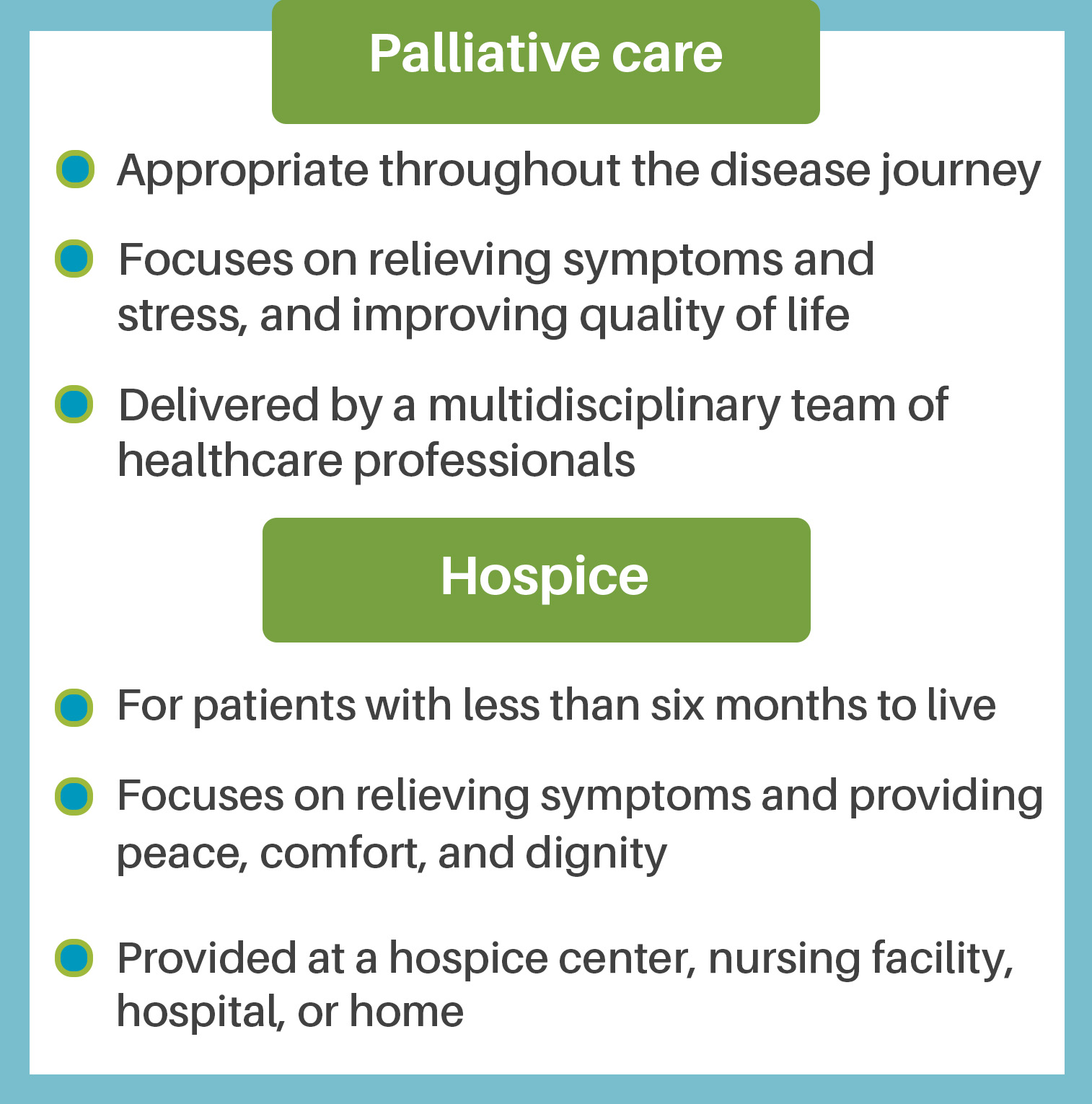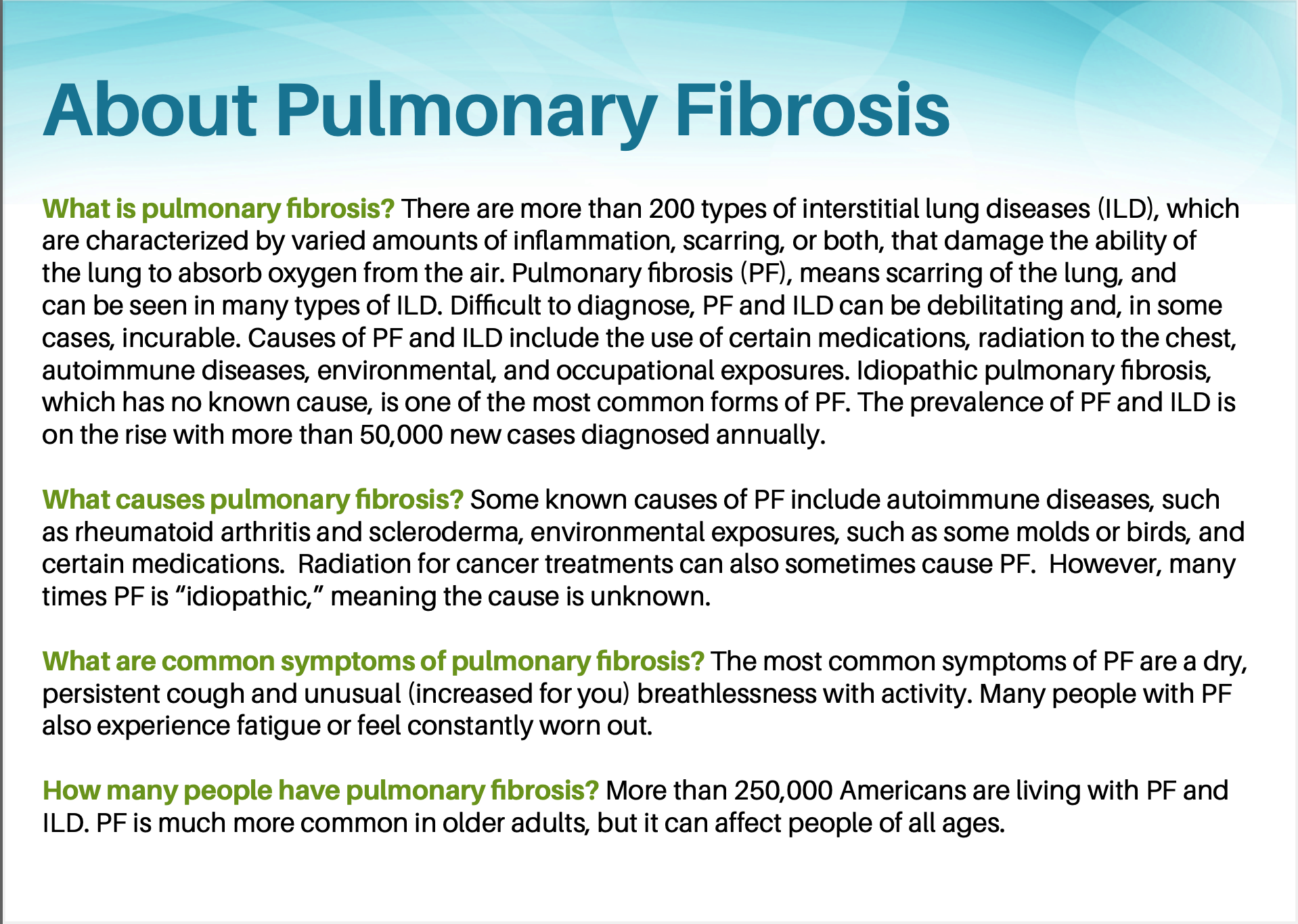PF Basics: Info for Newly Diagnosed Patients

Living with PF
Top takeaways
- Everyone’s experience living with pulmonary fibrosis (PF) is different, but most people have periods of stability alternating with periods of progression.
- From maintaining a healthy diet and getting enough sleep to staying informed and serving as your own best advocate, you can do a variety of things to maintain and improve your physical and mental health along your PF journey.
- Palliative care, which focuses on managing your symptoms, can help you live better with PF.
Just like you, your PF experience is unique
Each person’s experience living with PF is different—there’s no “usual” experience. Some people have severe symptoms, and some have none at all. Some people remain stable for years before progression begins, and others progress rapidly after they receive their diagnosis. Most people fall between these two extremes, with periods of stability alternating with periods of progression.
As you learn to live with PF, you, your family, and your friends will establish a “new normal” in your day-to-day living. In this module, the Pulmonary Fibrosis Foundation (PFF) shares tips for staying physically and emotionally healthy, talking to family and friends about your disease, and preparing for the future.

Maintaining your health
While your doctors, nurses, and other healthcare providers will help you manage your disease, you are your most important advocate. People living with PF who take an active role in their own care frequently have better results in the long run. There are a variety of things you can do to maintain and improve your quality of life while living with PF. Click on the down arrows to learn more.

Palliative care and planning for the future
Palliative care is focused on treating the symptoms of a chronic illness. When delivered early in the course of treatment, palliative care can significantly improve health and quality of life for both the person with PF and their caregivers. People with PF may experience many symptoms, including shortness of breath, cough, fatigue, anxiety, depression, problems with sleep, and fear of the unknown, to name a few. The goal of palliative care is to provide relief from the symptoms and stress of a serious illness.
Using a multidisciplinary approach, palliative care can involve physical, psychosocial, and spiritual factors in the treatment approach. Teams may include physicians, pharmacists, nurses, religious leaders, social workers, psychologists, and others. Read the PFF’s statement for patients on palliative care or watch a short video. this link will open a new tab.
The terms “palliative care” and “hospice” are sometimes confused. While palliative care is appropriate throughout the course of the disease, hospice care is a type of end-oflife care. It’s reserved for people with less than six months to live and is intended to help people who are dying find peace, comfort, and dignity. Hospice care includes treatments to control breathlessness and other symptoms to maintain comfort. It also provides support to families. Care can be provided at a hospice center or done in nursing
facilities, hospitals, or at home.
Many people living with PF find reassurance in planning for end-of-life care well before they need it. Watch a 50-minute webinar about how to communicate your values, goals, and preferences for future medical care, and what paperwork will be of help.
Sharing your diagnosis


Especially for caregivers
Patient stories
Next steps
